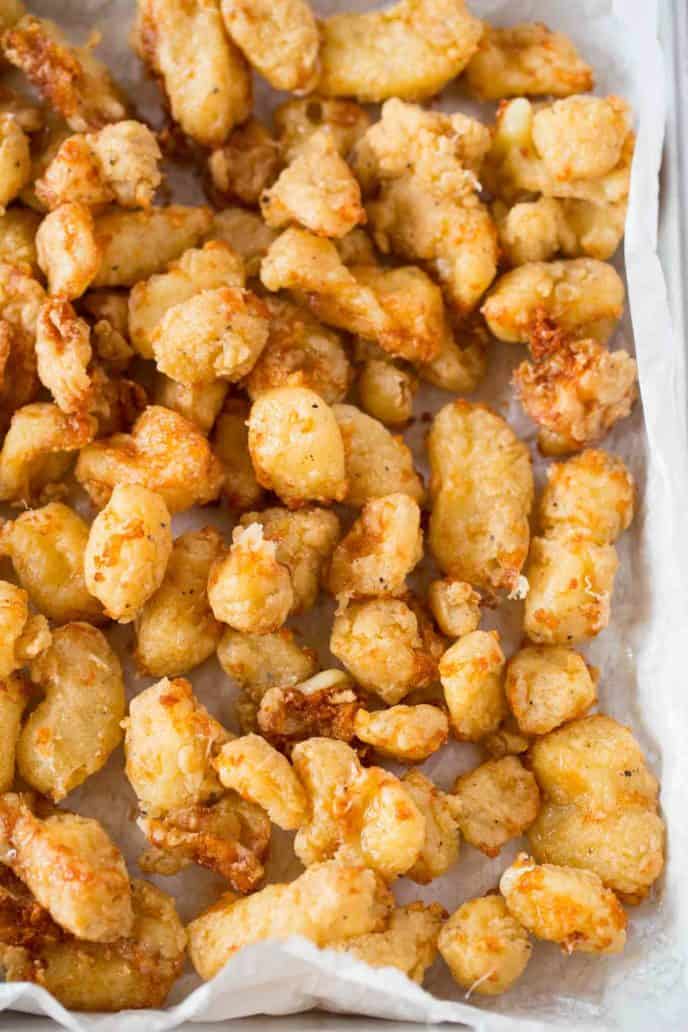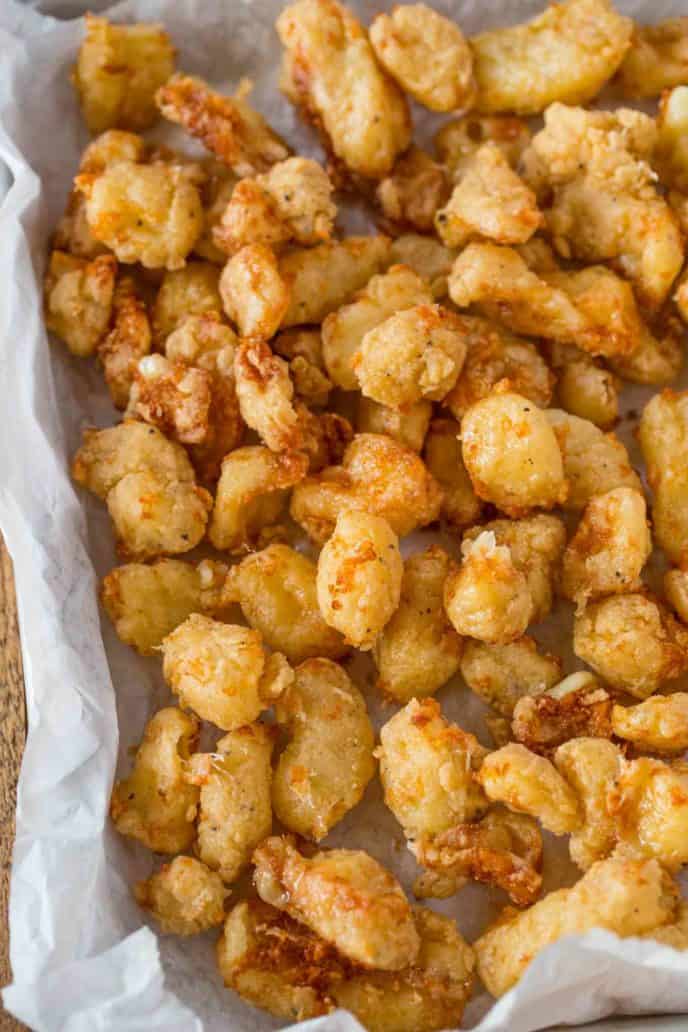FRIED CHEESE CURDS
FRIED CHEESE CURDS
Fried Cheese Curds just like at your local state fair without the lines, dirt or crazy expensive prices. Forget plain old fried mozzarella sticks!
Appetizers, especially fried ones, are always the hit of the party or state fair and these cheese curds are no exception. We love to serve them along side Buffalo Chicken Tenders and Fried Pickles.
 FRIED CHEESE CURDS
FRIED CHEESE CURDSFried Cheese Curds aren’t just for the state fair anymore. I know most people don’t buy cheese curds at the grocery store as a general rule but if you’ve ever enjoyed fried cheese curds then you know how much better than mozzarella sticks they are.
HOW DO YOU MAKE FRIED CHEESE CURDS?
Let the curds sit at room temperature until they start to “sweat” a little before coating them in flour.
Make a tempura like batter using flour, baking powder, salt and club soda.
Cook them until golden brown and don’t pile them on top of each other or they’ll deflate and ooze cheese out.
WHAT IS THE DIFFERENCE BETWEEN CHEESE AND CHEESE CURDS?
When cheese is made it starts as pasteurized milk before rennet is added to firm the cheese before cooking. Once cooked pressure is added to create a firm cheese and expel any remaining whey. Cheese curds (if fresh they squeak!) are similar to cheese but they don’t go through the final pressing process.
WHAT KIND OF CHEESE DO YOU USE FOR CHEESE CURDS?
Most fried cheese curds are made using mozzarella cheese curds, but cheddar cheese curds are equally delicious!
Should I refrigerate cheese curds? NO! Absolutely not. Buy cheese curds as fresh as you can and leave them out for up to 24 hours. Do not refrigerate them as they will lose their “squeak” and that is generally a sign of freshness in cheese curds. Just be sure you’re buying them with plans to use them soon.

FRIED CHEESE CURDS
Yield: 12 servings
Prep Time: 5 minutes
Cook Time: 10 minutes
Total Time: 15 minutes
Course: Appetizer
Cuisine: American
Fried Cheese Curds just like at your local state fair without the lines, dirt or crazy expensive prices. These will make you forget you ever liked plain old fried mozzarella sticks!
INGREDIENTS
- 1 pound cheese curds at room temperature
- 1 cup flour
- 1 1/2 teaspoons baking powder
- 1/2 teaspoon salt
- 1 cup club soda
- canola oil for frying
US Customary - Metric
INSTRUCTIONS
Note: click on times in the instructions to start a kitchen timer while cooking.
- Let the curds sit at room temperature until they start to "sweat" a little before coating them in flour.
- Use the remaining flour and add it to a bowl with the baking powder, salt and club soda, whisking until smooth.
- Heat a pot of oil 3 inches deep to 360 degrees.
- Add the cheese curds to the batter using a skimmer to let the excess batter drain before adding them to the hot oil and cooking them for one minute until golden brown, stirring them after about 30 seconds.
NUTRITION INFORMATION
Yield: 12 servings,
Amount per serving: 186 calories,
Calories: 186 g,
Carbohydrates: 8 g,
Protein: 10 g,
Fat: 12 g,
Saturated Fat: 6 g,
Cholesterol: 40 mg,
Sodium: 348 mg,
Potassium: 61 mg,
Calcium: 29.5 g,
Iron: 2.9 g
more recipes @ https://dinnerthendessert.com
BERITA LENGKAP DI HALAMAN BERIKUTNYA
Halaman Berikutnya


